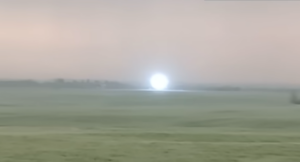A passion for the natural world drives many of our adventures. And when we’re not actually outside, we love delving into the discoveries about the places where we live and travel. Here are some of the best natural history links we’ve found this week.
Modern crocodiles evolving rapidly: Crocodile ancestors date back 235 million years, to the Triassic period. But today, they are currently evolving faster than they have at any point in history. Analysis of crocodilian skulls shows that modern species look so similar because they have evolved to have the same skull shapes, not because of their shared ancestry.
Norwegian cave holds 100,000-year-old polar bear bones: The EvoCave project began in September to excavate cave systems in Norway. Already, their first dig discovered pieces of bone that date back 100,000 years. Many fragments come from prehistoric wolves, polar bears, and seals. The findings show that there must have been multiple warm phases during the last glaciation in Europe.

Chimps with leprosy have similar symptoms to humans. Photo: Tai Chimpanzee Project
A human disease appears in chimpanzees
Leprosy identified in wild chimpanzees for the first time: Leprosy-infected chimps have turned up in Guinea-Bissau and the Ivory Coast. The images show that the infected chimpanzees develop symptoms similar to those in humans. The chimps had lesions and growths on their faces, hair loss, and “claw hand” – excessive nail growth and deformed fingers. These are the first known cases of leprosy in wild chimpanzees and the first known non-human cases in Africa.
Octopuses can ‘see’ with their skin: Many cephalopods are known for their mesmerizing color-changing displays. Now scientists have discovered that octopuses can do this without using their eyes or brain. Their skin detects light and changes with the color temperature, in order to blend in better.

The ancient wine-making facility in Yavne, Israel. Photo: Israel Antiquities Authority
An ancient winery
1,500-year-old winemaking facility unearthed in Israel: The largest known wine production complex from the Byzantine period has been discovered. The Israel Antiques Authority unearthed the facility in Yavne, south of Tel Aviv. The site contains five wine presses, four warehouses for aging, and kilns for firing clay amphorae. Archaeologists estimate that the site produced two million litres of wine every year. “We were surprised to discover a sophisticated factory here, which was used to produce wine in commercial quantities,” said researchers.
The Earth is reflecting less light: The amount of sunlight that the Earth reflects has noticeably lessened in recent years. A study from 1998 to 2017 found that the largest decrease happened in the last two years. The team measured earthshine –- the light that reflects off the Earth, to the moon, and then back to our planet. The drop may be due to warmer temperatures along the Pacific coasts of North and South America.






